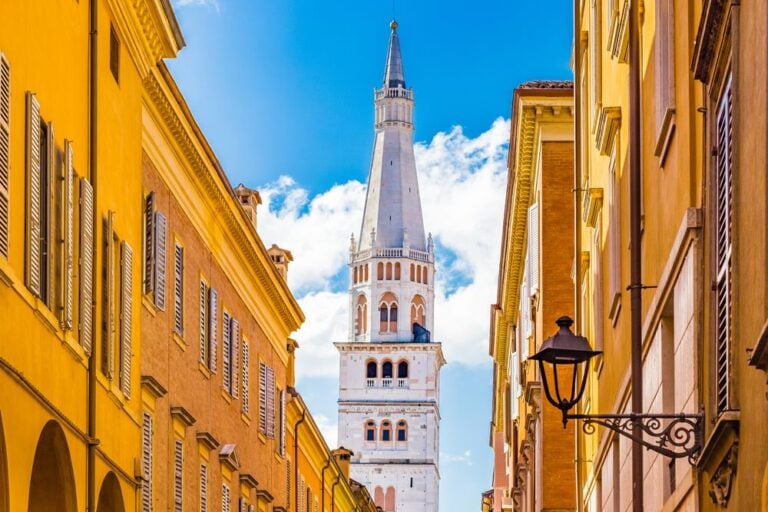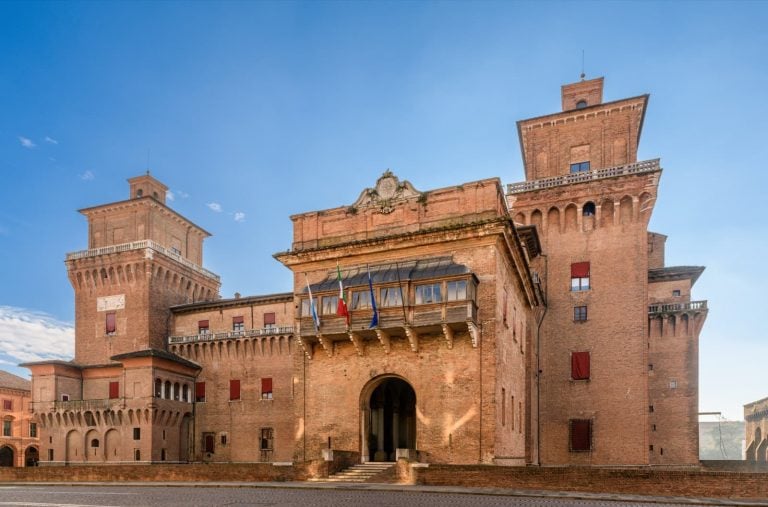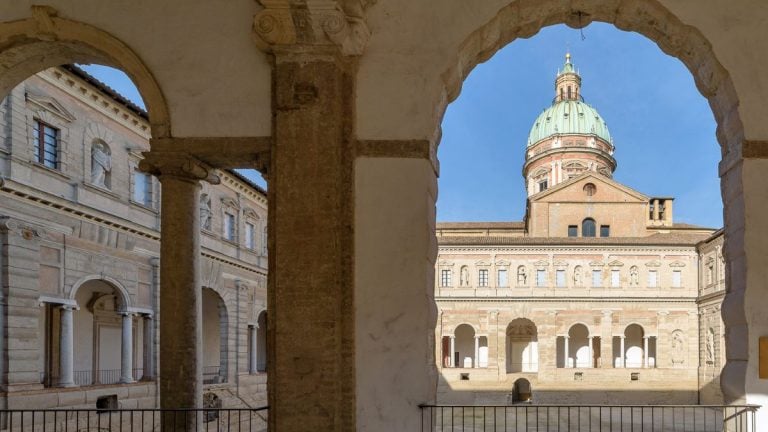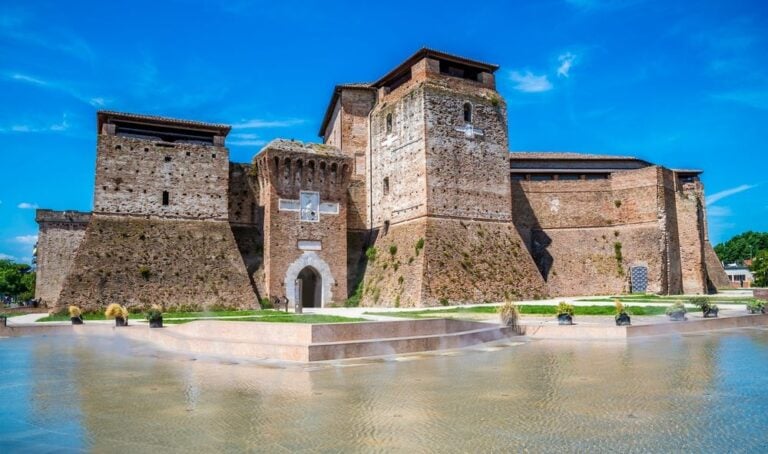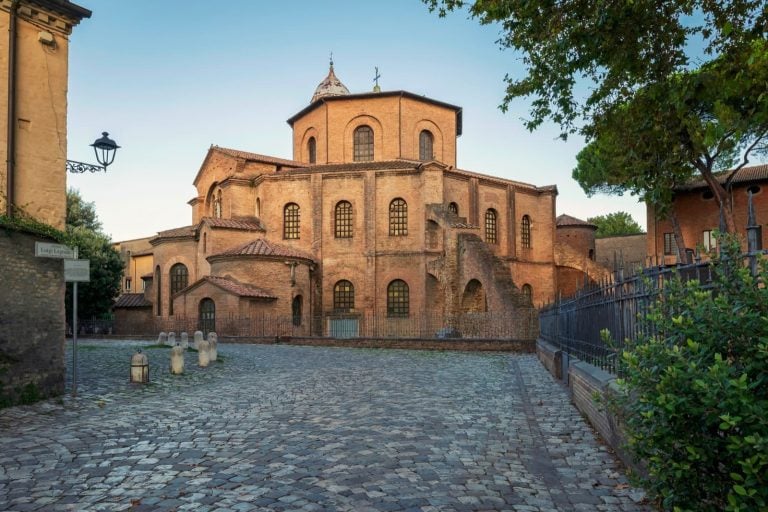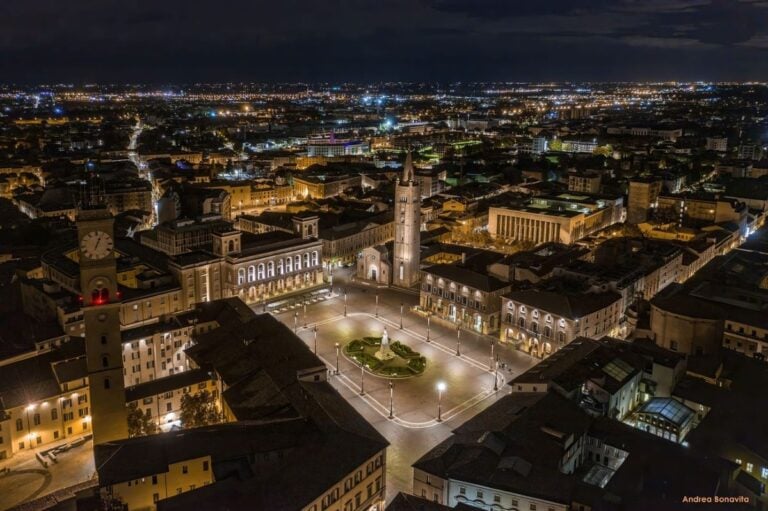Cesena is a city on a human scale, captivating its visitors with grace and elegance. No less than three Popes were born here, and the Malatesta family ruled over the city for a long time – a name that still echoes at every street corner.
Surrounded by fields and hills, halfway between the Adriatic and the Apennines, welcoming and tranquil, Cesena is the genuine essence of Romagna. You just have to discover it with this 10-stage tour through the city centre.
1. Rocca Malatestiana
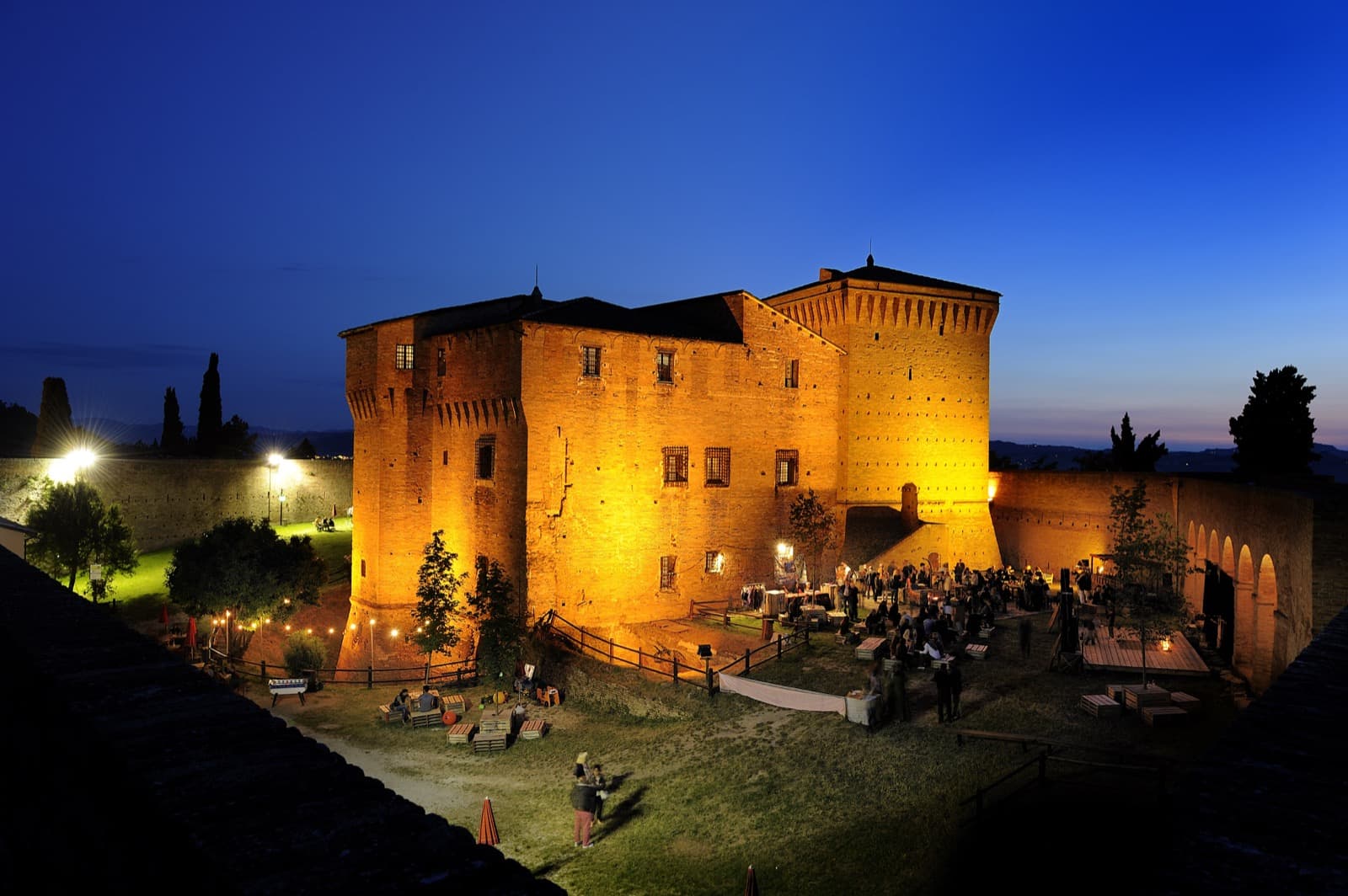
Our tour starts on Garampo Hill, which overlooks the old town and is home to one of its most famous monuments. The only survivor of a network of three fortresses that once protected the city, admired even by Leonardo da Vinci himself, the Rocca Malatestiana was built between the 14th and 15th centuries and still offers a perfect view of Cesena, which on clear days reaches as far as the sea.
Inside we find a large courtyard encompassing two towers – the Mastio and the Palatium, today home to the Museum of the History of Agriculture – and a series of rooms that can be visited on a guided tour, including an exhibition of artefacts dating back to the Malatesta and Renaissance periods.
Those visiting in summer will also have the opportunity to attend one of the many events organised in the courtyard.
2. Piazza del Popolo
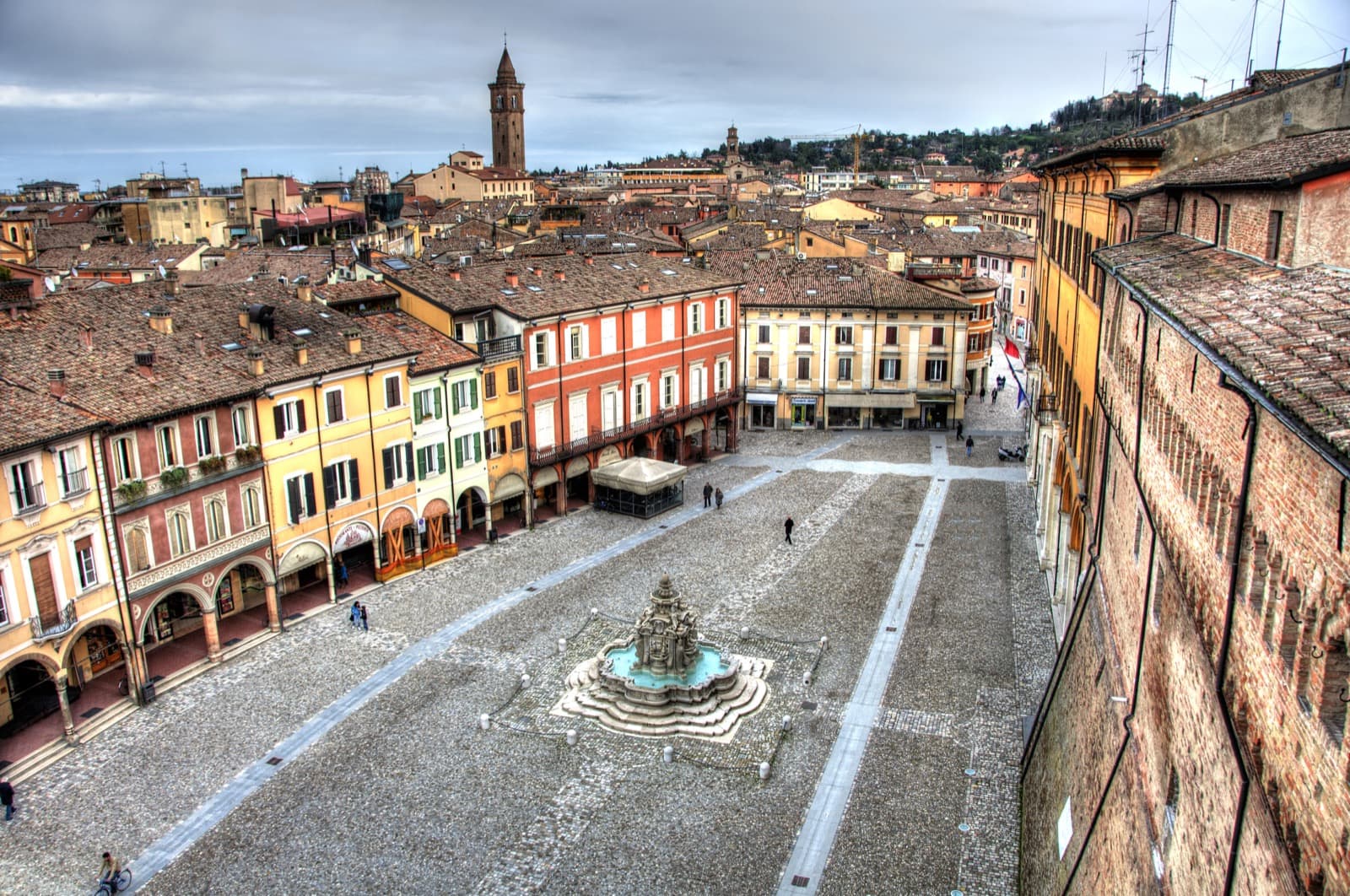
Walking down the hill through the green of the Parco della Rimembranza, we arrive in the main square of Cesena. Like any self-respecting square, Piazza del Popolo is the fulcrum of the city’s social, cultural and political life: the weekly market and numerous important events such as the San Giovanni Fair take place here, and this is where the Town Hall stands.
In this elongated space, opened in the 15th century by Andrea Malatesta, we can also admire the so-called Rocchetta di Piazza – a fortification created to defend the Malatesta Fortress – with its tower and the Venetian Loggetta, home to the Museum of Ecology, as well as some fascinating pastel-coloured private palazzos resting on a portico.
However, centre stage is the Masini Fountain, which immediately enraptures visitors’ gaze with its whiteness and elegance.
3. Fontana Masini
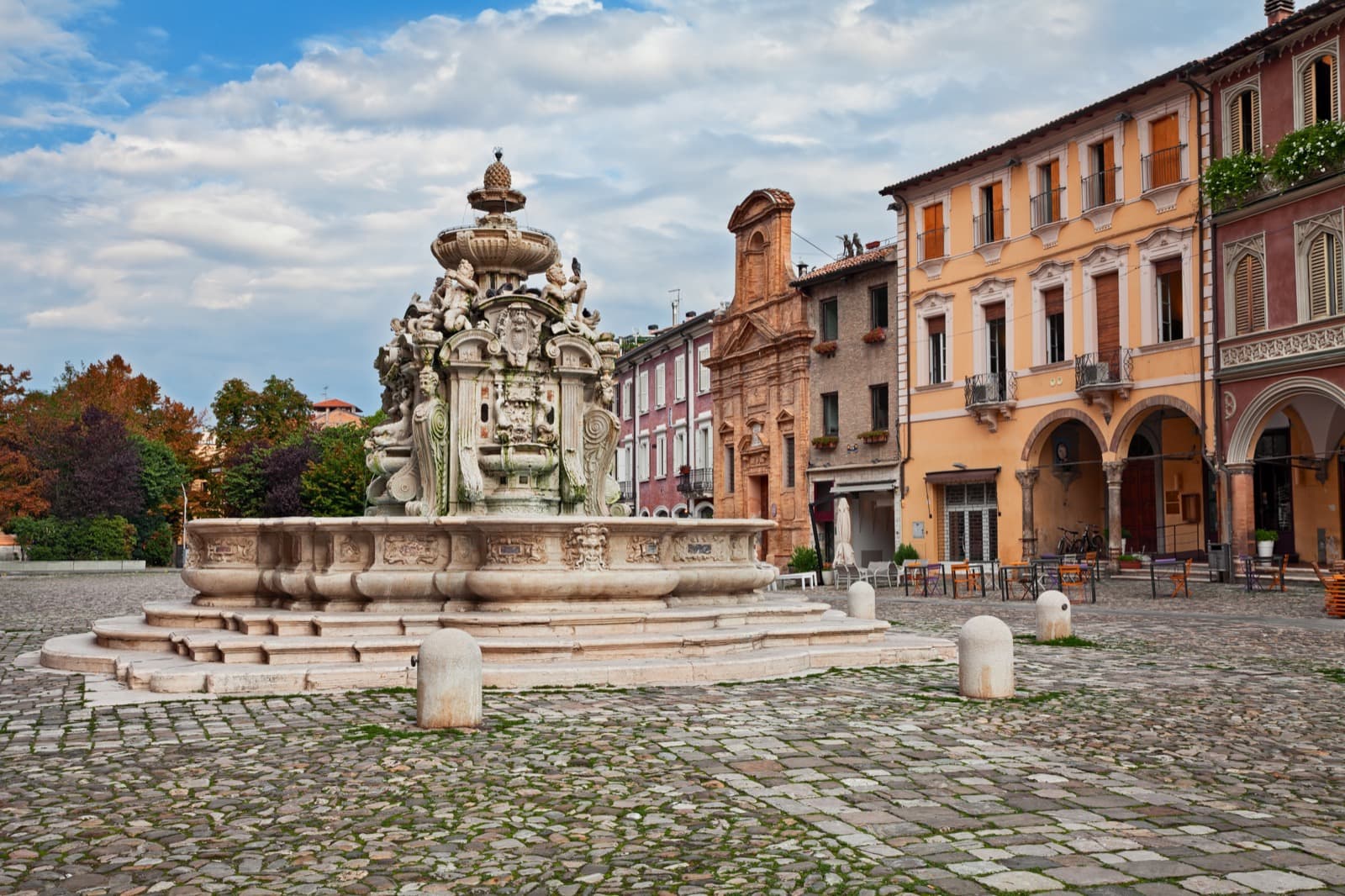
One of Cesena’s landmarks, the fountain owes its name to the architect Francesco Masini, who designed it in 1588.
Beyond the rich decorations, a strong reminder of the Mannerist style, the monument stands out in the square because of its white Istrian stone, which blends well with the more “colourful” context.
As for the structure, Masini Fountain stands on three steps and consists of four façades decorated with pilasters and coats of arms of bishops and cardinals, as well as Pope Sixtus V. At the corners we can see statues of tritons spraying water from their trumpets, while at the top of the fountain a pine cone symbolises prosperity and abundance.
4. Gli Equilibristi by Leonardo Lucchi
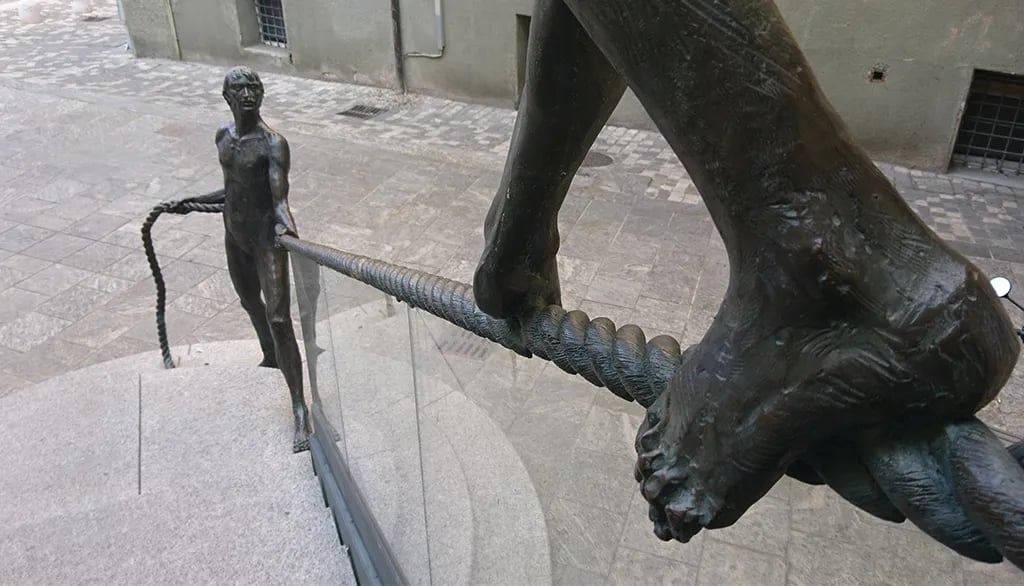
Let us leave Piazza del Popolo and its fountain to get to an alley just a few steps away, hiding a little surprise. It is the bronze statues of Vicolo Cesuola, placed right on the steps connecting the street with the city’s main square and created by Cesena artist Leonardo Lucchi.
The protagonists of the installation are two equilibrists, a man and a woman, who allude to the circus world with magic and elegance. The man stretches the rope – actually the handrail of the staircase – while she balances on it holding a barbell in her hand.
These are not the only sculptures by Lucchi around the city: his presence can also be felt in other streets and squares in Cesena, embellished by the artist’s works..
5. Biblioteca Malatestiana
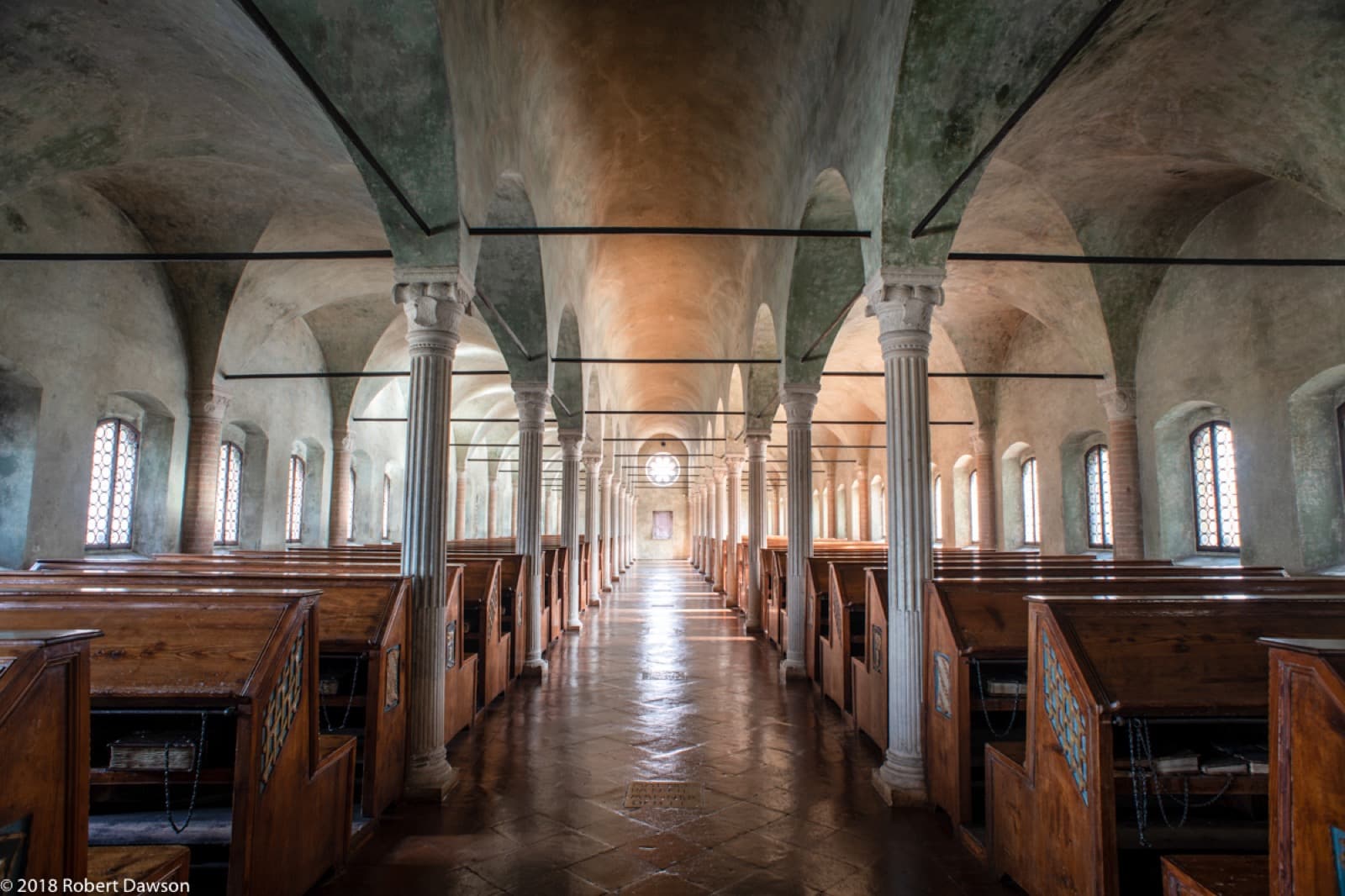
The Biblioteca Malatestiana Antica (Ancient Malatestian Library), very close to Piazza del Popolo, is not just the only Unesco monument in the city of Cesena. By visiting it, you will find yourself before a place that originated as both a religious and civic institution, which distinguishes it from other libraries, and that represents the only example of a humanistic library preserved in perfect condition to this day.
But let’s take a step back. As with the fortress we told you about at the start of this tour, it was the Malatesta family who initiated the construction of the monument. More precisely, it was Malatesta Novello who wanted a library in his Cesena, which was completed in the mid-15th century in Renaissance style.
As we enter we come upon a room divided into three naves, with green-plastered vaults and a long succession of wooden pews. It is amazing to think that the furnishings and volumes kept inside, some tied with a chain to the pews to prevent them from being stolen, date back to the period of its foundation and have survived almost intact to this day.
Before leaving this special place, turn around and look at the tympanum above the entrance door: you will find a bas-relief depicting the Malatesta emblem, the elephant, and the inscription “Elephas Indus culices non timet”, or “The Indian elephant does not fear mosquitoes”, indicating that a strong family like the Malatesta shuns small things, leaving them to the weakest.
6. Cattedrale di San Giovanni Battista
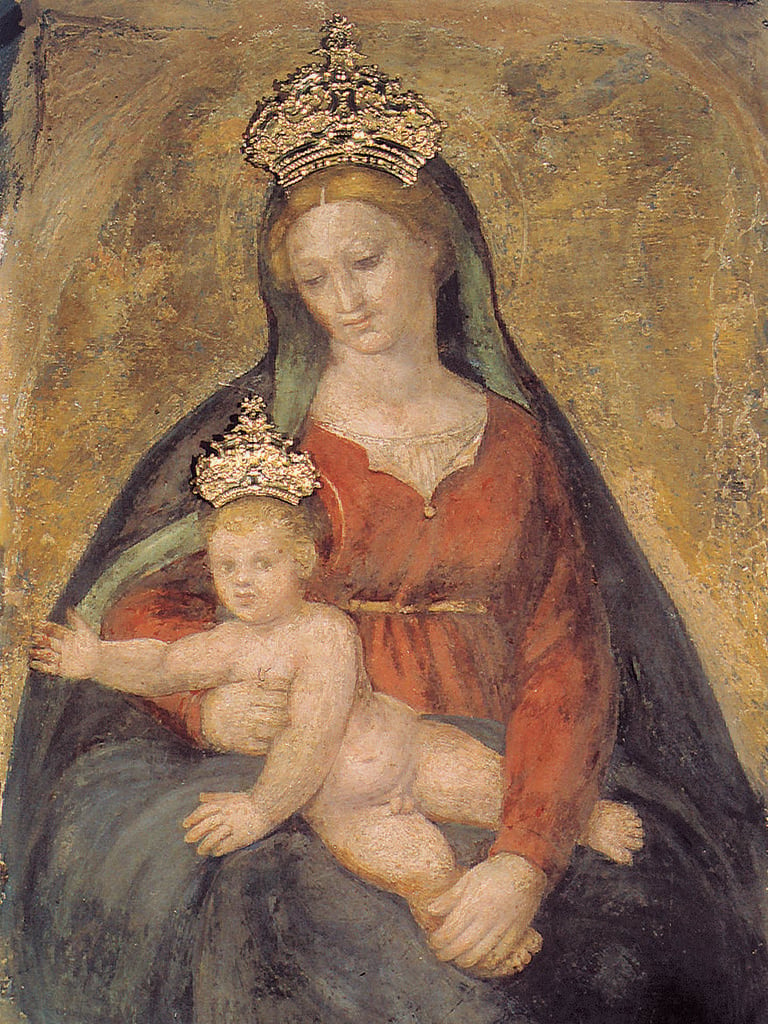
Dedicated to St John the Baptist, the Cathedral of Cesena is further evidence of the Malatesta rule over the city. Its current appearance follows the original design, dating back to 1385: a façade with simple lines, in Romanesque style, and a Gothic interior divided into three naves.
Among the cathedral’s chapels, not to be missed is the one dedicated to the Madonna del Popolo – named after the great devotion of the people of Cesena towards her – which boasts a beautiful icon by Bartolomeo Ramenghi, known as Bagnacavallo, and the spectacular frescoes on the dome signed by Corrado Giaquinto.
Outside, next to the bell tower, we can find another sculpture by Leonardo Lucchi depicting the city’s patron saint.
7. Pinacoteca Comunale
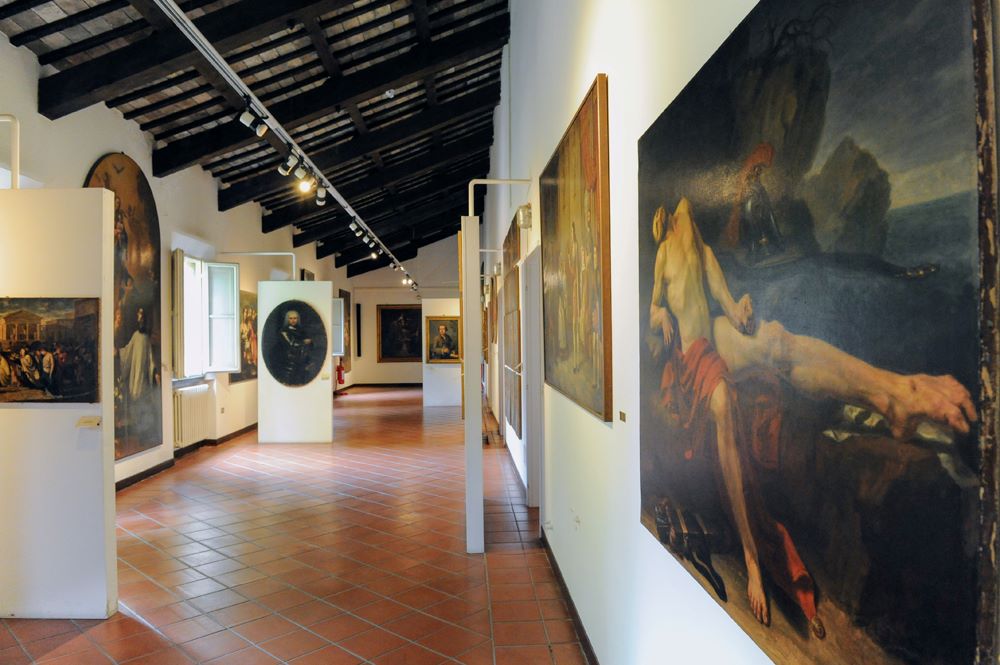
Just a few steps away from the cathedral, the Pinacoteca Comunale di Cesena ( City Art Gallery of Cesena) gathers a diverse collection of works ranging from local artists to internationally renowned painters, mostly acquired following the suppression of religious orders during the Napoleonic era.
The Art Gallery is housed in the former monastery of San Biagio and offers its visitors the opportunity to admire ancient works, such as Guercino’s “Saint Francis Receives the Stigmata”, as well as contemporary works such as Renato Guttuso’s “Peasant Woman” and Mario Schifano’s “Anaemic Landscape”.
8. Teatro Comunale “Alessandro Bonci”
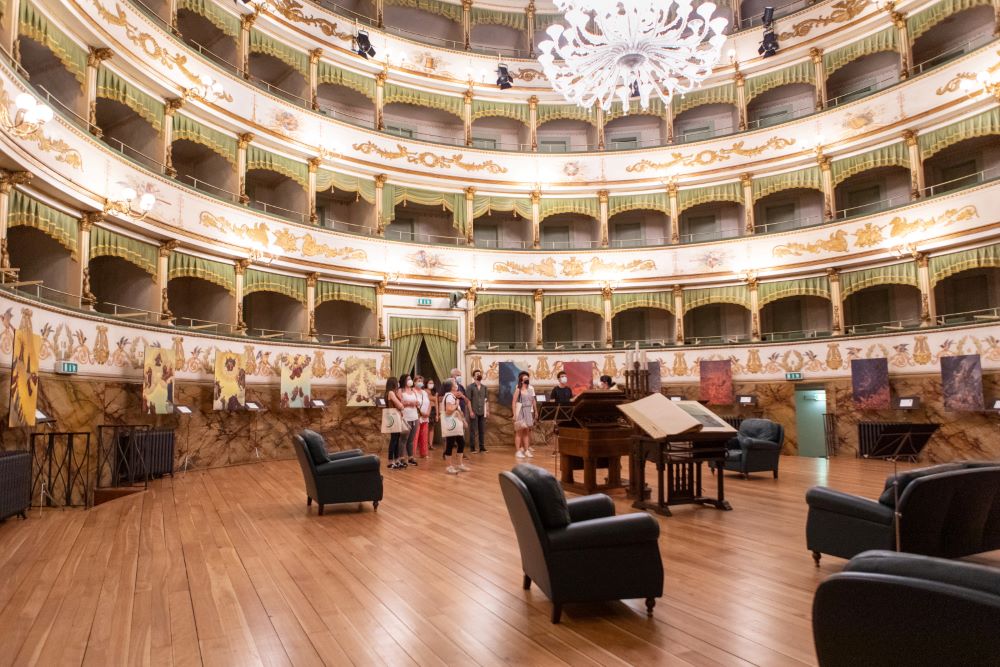
Let us now move on from the medieval splendour of the Rocca, the Piazza and the Library to a jewel of the neoclassical era: the “Alessandro Bonci” Municipal Theatre. Its construction dates back to 1846, in the classical style of the Italian theatre.
The theatre welcomes us with a porticoed façade, featuring the municipality’s coat of arms and depictions of the Savio and Rubicone rivers, placed inside the tympanum. Boasting perfect acoustics, the theatre now hosts a rich programme of shows ranging from prose to ballet, from opera to children’s theatre.
Speaking of shows, the name of the Bonci is linked to a memorable event in the history of Italian theatre: the legendary actor Vittorio Gassman made his first appearance right on its stage in 1952.
9. Giardini Pubblici
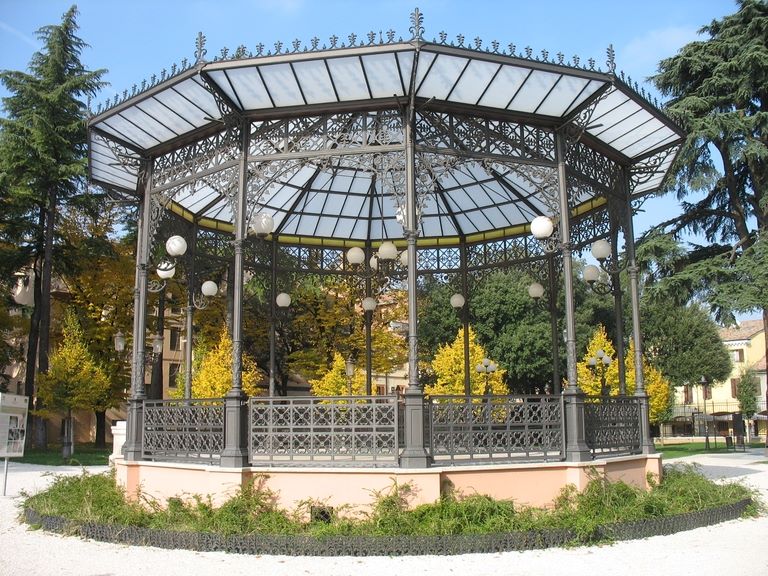
Having reached this point on our walking tour of Cesena, it’s time to take a break. Next to the Bonci Theatre is in fact the main park area of the old town, the Giardini Pubblici, located in an area of the city teeming with bars and clubs, perfect for a refreshing drink or a snack.
Built in the 19th century in the Neoclassical style, the garden has been remodelled several times until the latest renovation in the early 2000s, which restored its original design. Today it stands as a veritable ‘open-air museum of cast-iron street furniture’ thanks to the presence of the street lamps, the gate and above all the elegant and graceful central gazebo, which hosts concerts in the summer season.
The side that separates it from the theatre features a number of statues dedicated to characters from the Commedia dell’Arte.
10. Chiesa di Santa Cristina
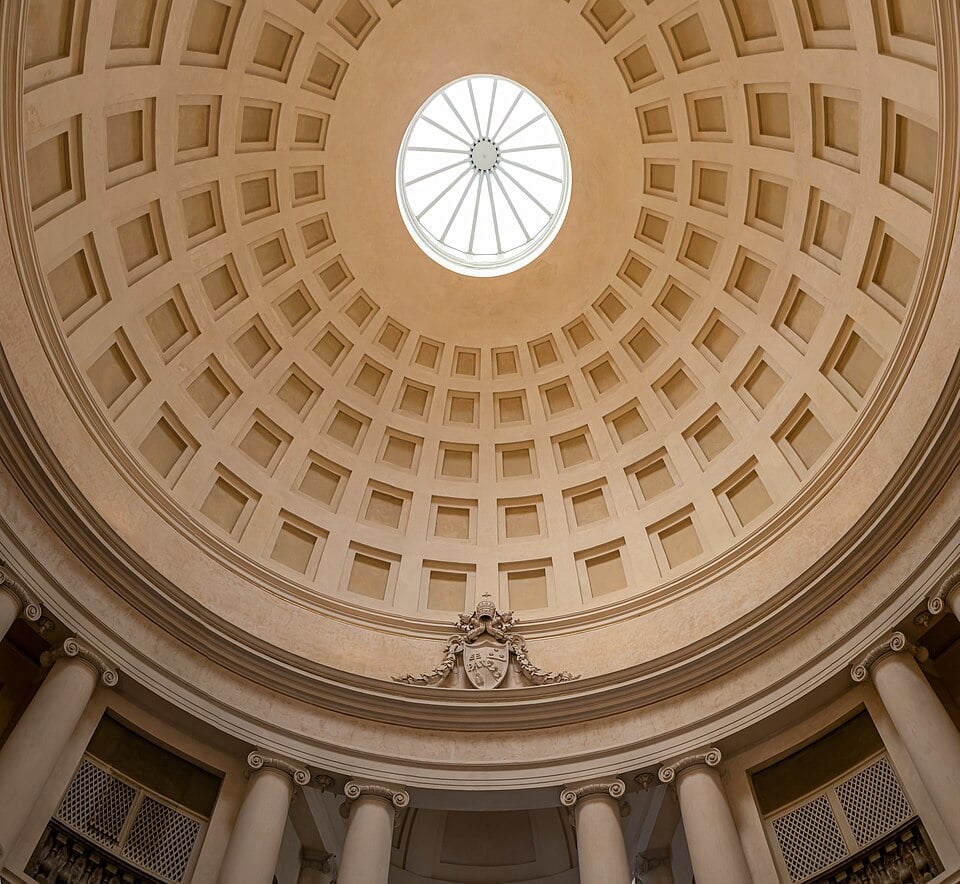
At the end of our tour we head towards the Church of Santa Cristina, about a 15-minute walk from the gardens, which we could define as “little Rome in Cesena”. This church in neoclassical style has a peculiarity that really should not be missed: it features a dome that is inspired by the Roman Pantheon, as Roman is the architect who designed it.
Dating back to the Middle Ages, after various reconstructions it was commissioned to Giuseppe Valadier in the first half of the 19th century – who went down in history, among other things, for the layout of Piazza del Popolo in Rome and for the temple of the same name in Genga, in the Marche region – by Pope Pius VII Chiaramonti.
Author

Maria Grazia Masotti
An eternal dreamer, but I try to stay grounded. I was raised in the countryside but I love big cities. I’m always ready for a trip, as long as it’s sustainable.
You may also like
Modena on foot, what to see in a 10-stage tour
by Maria Grazia Masotti /// June 3, 2025
Ferrara on foot, what to see in a 10-stage tour
by Elisa Mazzini /// October 17, 2024
Reggio Emilia on foot, what to see in a 10-stage tour
by Maria Grazia Masotti /// January 8, 2025

Interested in our newsletter?
Every first of the month, an email (in Italian) with selected contents and upcoming events.
Rimini on foot, what to see in a 10-stage tour
by Maria Grazia Masotti /// February 21, 2025
Ravenna on foot, what to see in a 10-stage tour
by Davide Marino /// February 13, 2025
